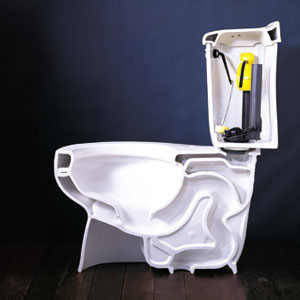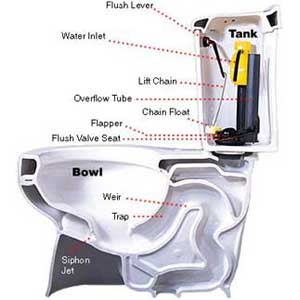
~ If your toilet tank lid has broken or chipped edges, take a fine file and carefully smooth down the sharp edges. Or remove the lid and do not use it.
~ Secure toilet tank lids in public or institutional environments with silicone. Apply clear silicone caulking between the bottom of tank lid and the face of the tank. When access to the inside of the tank is required, cut the silicone with a razor or knife.
~ If you have a five year old living with you, show them what's inside the toilet tank before they try to look on their own. Yup - sold another lid today to replace one broken by a curious toddler.












